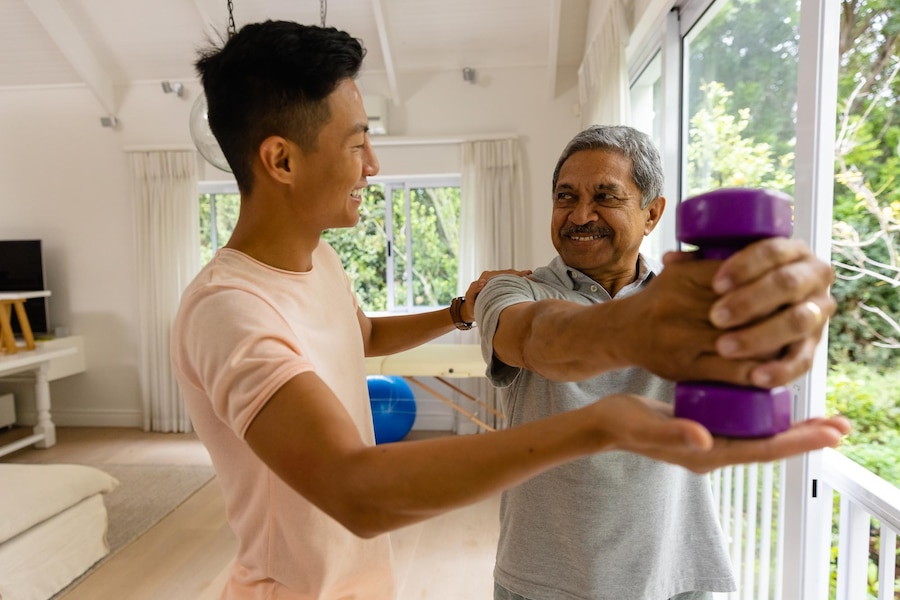“Mr. Swaminathan has been working as a cashier in a hotel for the last 40 years. He had seen the hotel and the city change to what it is today. Now at the age of 65 years, he still enjoys meeting people and doing his job. One day the owner’s son calls him up and says that he can now retire. The hotel had been remodeled and an old ‘looking’ cashier would not fit into the tempo of the NexGen hotel. Mr. Swaminathan still needed to earn as he didn’t have much savings left. When he approached other hotels for the job, they refused to hire him and advised him to take a rest.”
“Mrs. Kamala doesn’t want to see her doctor. She says that every time she visits him, he talks loudly and slowly to her although she doesn’t have any hearing problems. One time when she expressed concern about her leaking urine, he said that she had to live with it as it was part of normal aging and suggested using a diaper. Most of the time the doctor talks to her daughter who accompanies her, easily ignoring her presence in the room.”
“Mrs. Iyer thought she was aging gracefully. Her once black hair had slowly matured into silky grey hair. Then she saw an advertisement on TV where a daughter thought her mummy looked old with grey hair and convinced her mother to get it colored to become young. Mrs. Iyer thought this might be the reason why her daughter doesn’t take her out anymore for shopping. One day she decided to color her hair black. While her husband made fun of her, the daughter thought she had gone mad.”
Ageism: A Global Challenge
Ageism isn’t like any other prejudice; because unlike others that affect only a particular group of people, ageism hits anyone who gets old. As the world gears up to celebrate (or maybe observe) the International Day of Older People on October 1st, the World Health Organization has declared ‘Take a Stand against Ageism’ as this year’s theme. Though ageism has existed for centuries, we now have to look at ageism from a different perspective just because of the fact that the very population of older people fondly termed ‘elders’ is going to be substantial in years to come. It is expected that 25 percent of the world’s population will be more than 60 years old by 2050.
Ageism is stereotyping and discriminating based on a person’s age. For an older person, ageism is an everyday phenomenon. Though we don’t realize or don’t want to realize, the fact is that an older person has to undergo tremendous challenges to fit into a community originally built for the young. Ageism starts with stereotyping an older person as challenged and unproductive. The concept of retirement or forced retirement was a logical yet cruel solution to chronic unemployment. Decreasing the retirement age still remains one of the populist policies of young nations like India. The mythology of retirement, high expenditure, and an unproductive workforce adds up to ageism.
Stereotypes in the Media
Older people are stereotyped not only in the community but also in the media. Daily soaps, television, film, and advertising commonly feature stereotypes that show older adults through a lens of decline, emphasizing the “burdens” of growing old. The use of such stereotypes shapes, reinforces, and reflects society’s attitudes and responses to growing older.
Most often older people are depicted as helpless victims or people who are dependent on their children.
Elders who defy stereotypes are often picturized as crazy, bizarre, or comical.
The portrayal of older people in a positive light is usually for conveying anti-aging themes such as when promoting cosmetics products that further stereotype natural aging as unwanted and ugly.
Policy and Infrastructure Gaps
In order to cut down costs, policymakers often ignore the needs of older people, often putting money into more populist programs that primarily target younger electorates. This usually reflects in not investing and modifying facilities and infrastructures that will make the life of an older person easy.
Older people find it difficult to access facilities like transportation, banking, hospitals, and other utility-providing centers. The concept of elder-friendly offices and public spaces has yet to sink into our designs.
Without access to these facilities, older people often get marginalized in the community. Moreover, their contribution to social and economic welfare is restricted.
Ageism in Healthcare
Ageism is prevalent in medical treatment and care. Ageism can take the form of a provider dismissing treatable diseases as a feature of old age or treating expected changes of aging as though they were diseases.
Some of the already stereotyped complaints like memory loss, pain, depression, and incontinence are often underreported because of the fear of being snubbed by the provider.
Communication between doctors and older adults also is more likely to be complicated by sensory deficits, cognitive impairment, functional limitations, and the presence of an accompanying relative or caregiver in the medical visit.
Older patients may encounter doctors who automatically shout or raise their voices when communicating, or worse, ignore them altogether and speak only to a younger person who accompanied them to the visit.
Older people’s negative perception of their own health and living environment can lead to social isolation and low quality of life.
Research has shown that older persons with a negative attitude towards the aging process and their own lives live 7.5 years less than those who have a positive outlook. This research study is significant because the increase in longevity by having a positive outlook towards life (more than 7.5 years) is longer than keeping blood pressure and cholesterol in check.
Suicide rates in the elderly are on the rise again highlighting the fact that depression, bereavement, and adjustment disorder are under-reported by older people, unrecognized and overlooked by healthcare providers, and inadequately supported by the community.
Combating Ageism: Communication and Awareness
The two most effective ways to fight ageism are communication and awareness. By communicating with people who are affected by ageism, we can begin to learn their stories. We can begin to learn what makes older generations tick—and we can learn a lot about ourselves in the process. Policymakers should make programs to involve older people in an active workforce and utilize their expertise, skills, and wisdom in finding solutions to problems faced by the community. The healthcare sector should be geared up to meet the challenges of taking care of older people and providers should be educated and trained in taking care of them.
About Dr. Rahul Padmanabhan
Dr. Rahul Padmanabhan is a consultant in Geriatrics and Gerontology with a decade of experience in elder care. He specializes in home and community-based geriatrics and is currently the medical director of Dr. Rahul’s Elder Care, Coimbatore.
Dr. Rahul’s Elder Care is a top geriatric care service provider in Coimbatore.



